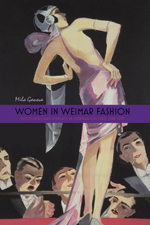The Magazine publishes a selection of general-interest books by alumni authors. For additional alumni books, see “In Their Own Words” at magazine.uchicago.edu/books.
Czechs of Chicagoland, by Malynne Sternstein, AB’87, AM’90, PhD’96, Arcadia Publishing, 2008. As this book’s dozens of photographs attest, Chicago’s Czech community has thrived since the 1800s, despite its original location near Mrs. O’Leary’s barn in the South Loop, allegedly the starting point of the Great Fire of 1871. The fire spared the Czech community, and many of its members relocated to Pilsen, gradually moving to the western suburbs of Cicero and Berwyn. An associate professor of Slavic languages & literatures and in the College, Sternstein tells the story of the city’s Czechs—their movement through different neighborhoods, their community organizations and political leaders, and their struggle to be accepted as real Chicagoans
Shaky Colonialism: The 1746 Earthquake-Tsunami in Lima, Peru, and its Long Aftermath, by Charles F. Walker, PhD’92, Duke University Press, 2008. A mid–18th-century earthquake and tsunami killed more than 4,000 people, destroyed the coastal cities of Callao and Lima—and changed Peru’s environmental and sociopolitical terrain. Focusing on Lima, Walker argues that the destruction crossed racial and economic lines, making it difficult to differentiate between classes. Disagreements arose over political reform, architecture and rebuilding, religion, and what some considered the excessive independence of Lima’s women. He traces the Peruvian viceroy’s controversial rebuilding plans—and objections to those plans from the church, Spain, and Lima’s diverse population.
Giving Well, Doing Good: Readings for Thoughtful Philanthropists, edited by Amy A. Kass, AB’62, Indiana University Press, 2008. With classic and contemporary texts by philosophers, writers, politicians, and civic leaders, this volume reflects on the practice of philanthropy and its goals and ideals. Kass, U of C senior lecturer in humanities, begins with essays like Dostoevsky’s “The Grand Inquisitor” that address philanthropy’s intentions and ends with Abraham Lincoln, Jane Addams, and Martin Luther King Jr., among others, who tackle the question, “What should we expect of philanthropic leaders?”

Anthropological Intelligence: The Deployment and Neglect of American Anthropology in the Second World War, by David H. Price, AM’85, Duke University Press, 2008. During World War II, U.S. anthropologists—typically focused on studying remote, non-Western populations—offered support and assistance to dozens of government agencies, including the Office of Strategic Services and the Office of War Information. They gathered intelligence, identified possible social weaknesses in enemies, and otherwise aided the war effort. Price uses interviews and research to examine the changing role of anthropologists, including Frank Boas and Margaret Mead, as the war mounted, and the ethical dilemmas raised by social scientists’ contributions to national tasks.

Women in Weimar Fashion: Discourses and Displays in German Culture, 1918–1933, by Mila Ganeva, PhD’00, Camden House, 2008. Fashion in the Weimar Republic emerged as a means of feminine self-expression. Ganeva argues that this trend transformed women from objects of male voyeurism into subjects with complex experiences of their metropolitan world, with female journalists and writers claiming their own voices by publishing on fashion.

Recipes for Russia: Food and Nationhood Under the Tsars, by Alison K. Smith, AB’93, AM’95, PhD’00, Northern Illinois University Press, 2008. Looking at Russian food consumption and production from the late-18th to the mid-19th centuries, Smith connects food to legal, economic, and social movements, fueled by competing ideas about the “rational” West and “traditional” Russia. While some Russian cookbook authors borrowed from foreign sources to establish their place as experts in Western-style practices, many agricultural reformers found traditional agrarian methods hard to eliminate. The conflict between newly imported practices and traditional customs exemplifies the problems of nation-building and how Russia came to define a national identity.
Body [in] Parts: Bodies and Identity in Sade and Guibert, by Clara Orban, AB’81, PhD’90, Lehigh University Press, 2008. Hervé Guibert was one of France’s most provocative 20th-century writers, examining how the body, imbued with desire and force, works as a pathway to identity. Guibert, who died of AIDS in 1991, also explored how identity dissolves as the body decays. Orban explores the textual link between Guibert and the Marquis de Sade, the Enlightenment libertine who wrote about the pleasures and limits of corporeality.
